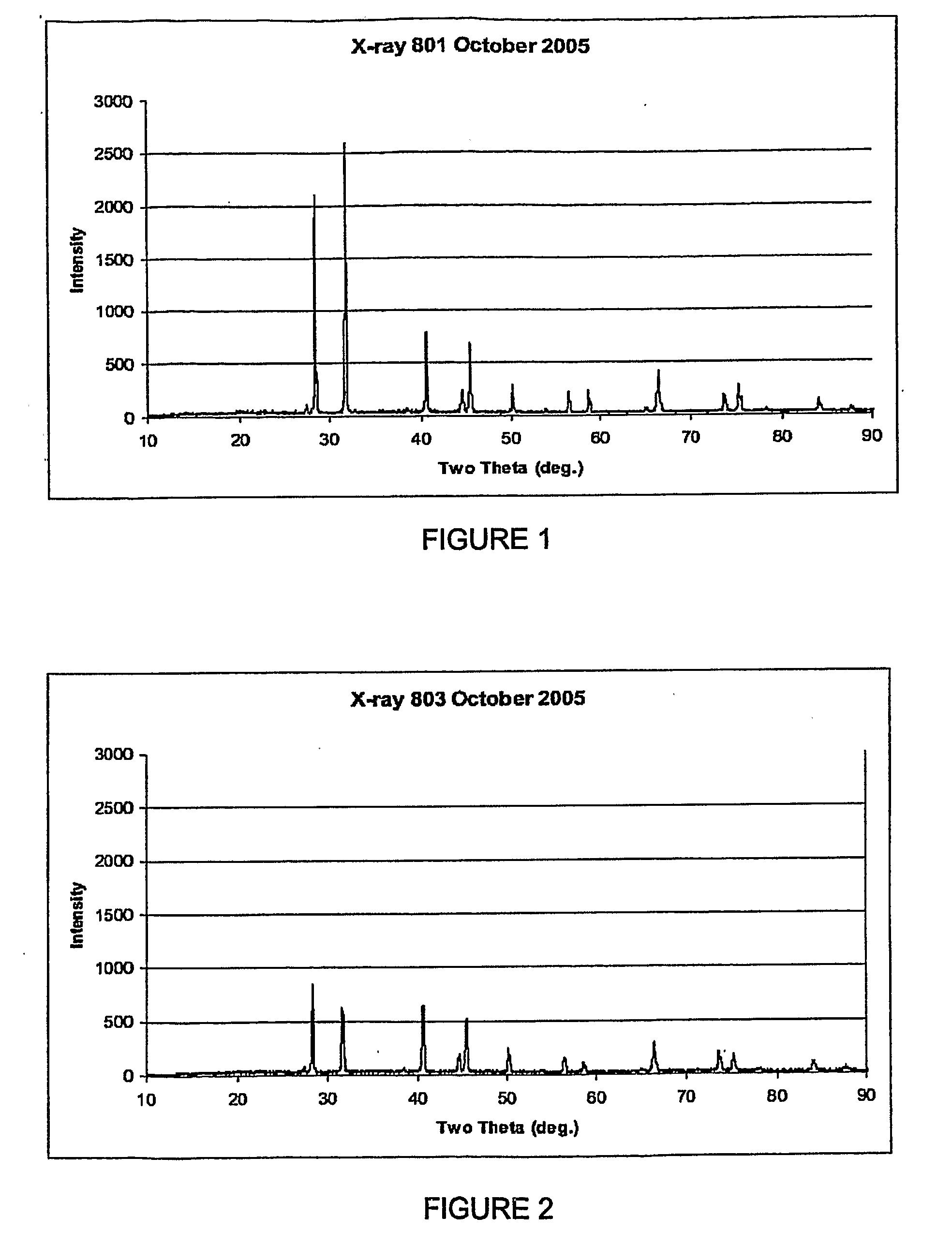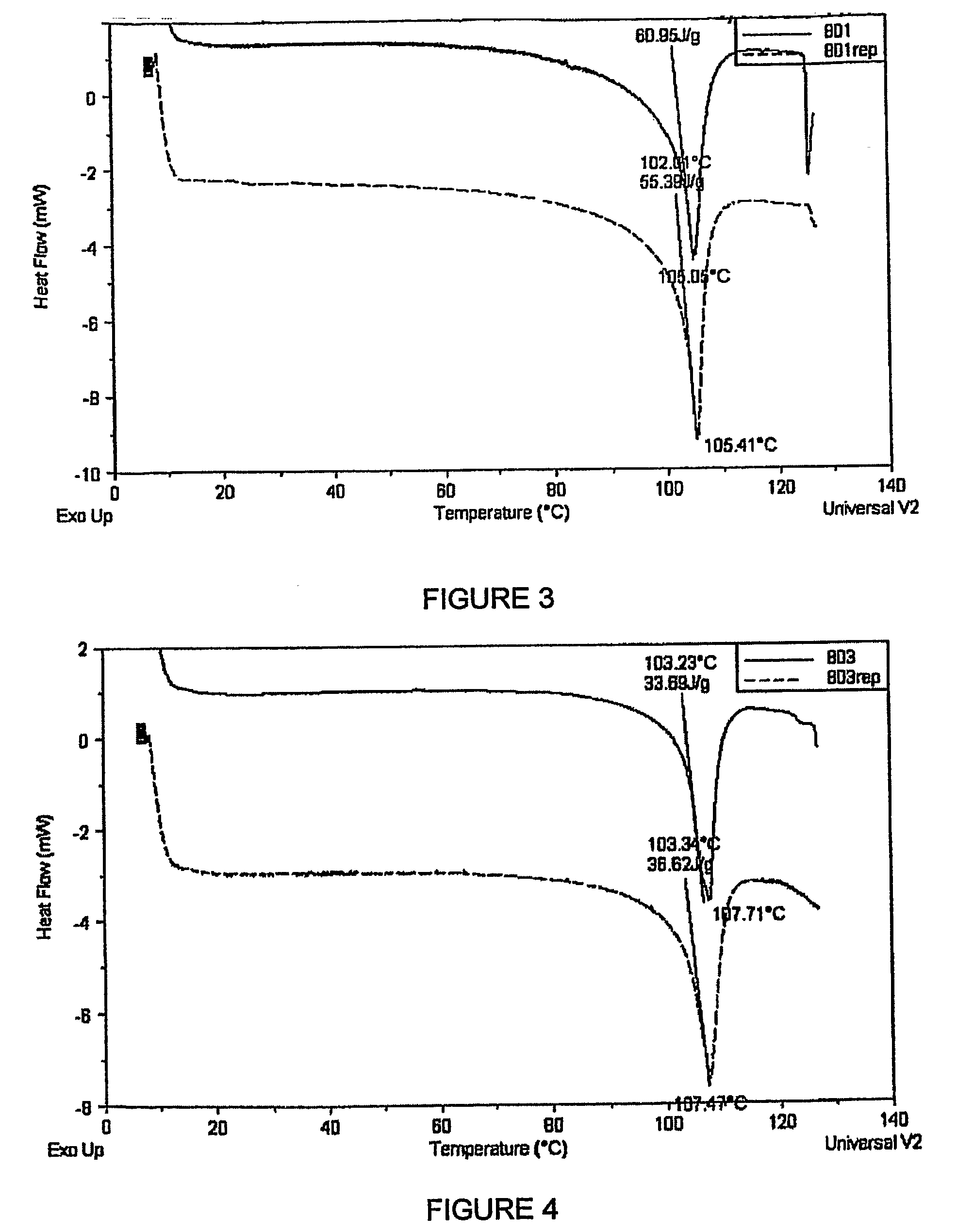Low-sodium salt composition
a technology of low-sodium salt and composition, which is applied in the field of low-sodium salt composition, can solve the problems of limiting the degree to which the processing might diminish the saltiness of nacl, and achieve the effects of reducing the degree to which the final product tastes, reducing capital and energy costs, and reducing the degree of burn
- Summary
- Abstract
- Description
- Claims
- Application Information
AI Technical Summary
Benefits of technology
Problems solved by technology
Method used
Image
Examples
example 1
Extrusion Cooking to Make Modified Potassium Chloride (“MPC”)
[0076]1. Blending dry ingredients including preferably from about 25 to about 75% by wt of cereal flour, preferably rice flour, from about 25 to about 75% by wt of KCl;[0077]2. Feeding the blended dry ingredients into an extruder along with a suitable amount of moisture and extruding the mixture at a temperature of from about 150 to about 350 degrees F., preferably 210 to 280 degrees F. at a pressure of from about 300 psi to about 500 psi to plasticize the mixture into an amorphous plasticized mass and extruding the amorphous plasticized mixture from the extruder;[0078]3. Drying the amorphous plasticized mixture to reduce the moisture content of the mixture; and[0079]4. Breaking the dried mixture into a desired particle size for suitable hydration, solubility, blendability and adherence.
[0080]The above process results in a Modified Potassium Chloride (MPC). This MPC may then optionally be blended with sodium chloride or al...
example 2
Extrusion Cooking to Make a Low-Sodium Salt Composition
[0081]A Wengar TX-57 extruder was used to produce a preferred low-sodium salt composition of the present invention. The extruder had a twin screw extrusion barrel and an extrusion die having two inserts with an inside diameter (ID) of 4.5 mm and two inserts having a land length of about 6.0 mm.
[0082]The following dry ingredients were blended in a mixing bowl using the following formulation:
1.Sodium chloride (Cargill Top Flo Evaporated Salt)25%2.Potassium chloride (Nutri-K, Rhesis Inc.,)25%3.Rice Flour (Sage V Medium grain)50%
[0083]The dry blend was fed into a pre-conditioning cylinder of the extruder via a “loss-in-weight” feeder at a rate of 60 kg / min and a feed-screw speed of 10 rpm. In the pre-conditioning chamber, water was added to the dry blend through an injection port to achieve 13.8% moisture content (dry weight basis). The pre-conditioning cylinder speed was 150 rpm and the water flow was 0.138 kg / min. The pre-conditio...
example 3
Drum Drying to Make Low-Sodium Salt Composition
[0096]An Atmospheric Double Drum Dryer (Model No. ALC-4 (Buflovak Division, Blaw-Knox Food and Chemical Equipment, Inc., Buffalo, N.Y.) was used that had a 6 inch drum diameter, an 8 inch drum length and a drum surface of 2.1 square feet. The material to be dried is pumped or poured into a nip between the two respective drums. The thickness of the sheets of dried product is controlled by adjustment of the gap between the two drums and by the drum revolution speed.
[0097]Sample 3a. A dry mix was made consisting of:[0098]50% fine rice flour[0099]25% regular food grade salt[0100]25% potassium chloride
[0101]From this premix, 100 g was taken and mixed with 300 g of water, cooked to a pasting temp of 185° F., and drum dried using an Atmospheric Double Drum Dryer-Model No. ALC-4 6×8 (Buflovak Division, Blaw-Knox Food and Chemical Equipment, Inc., Buffalo, N.Y.), at a steam pressure of 25 psig and drum speed of approximately 1.2 rpm and gap clea...
PUM
 Login to View More
Login to View More Abstract
Description
Claims
Application Information
 Login to View More
Login to View More - R&D
- Intellectual Property
- Life Sciences
- Materials
- Tech Scout
- Unparalleled Data Quality
- Higher Quality Content
- 60% Fewer Hallucinations
Browse by: Latest US Patents, China's latest patents, Technical Efficacy Thesaurus, Application Domain, Technology Topic, Popular Technical Reports.
© 2025 PatSnap. All rights reserved.Legal|Privacy policy|Modern Slavery Act Transparency Statement|Sitemap|About US| Contact US: help@patsnap.com


